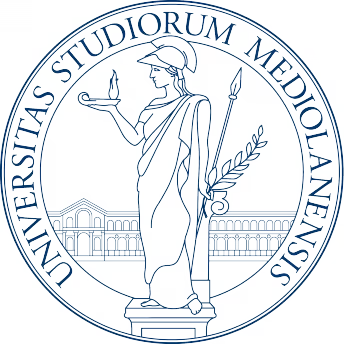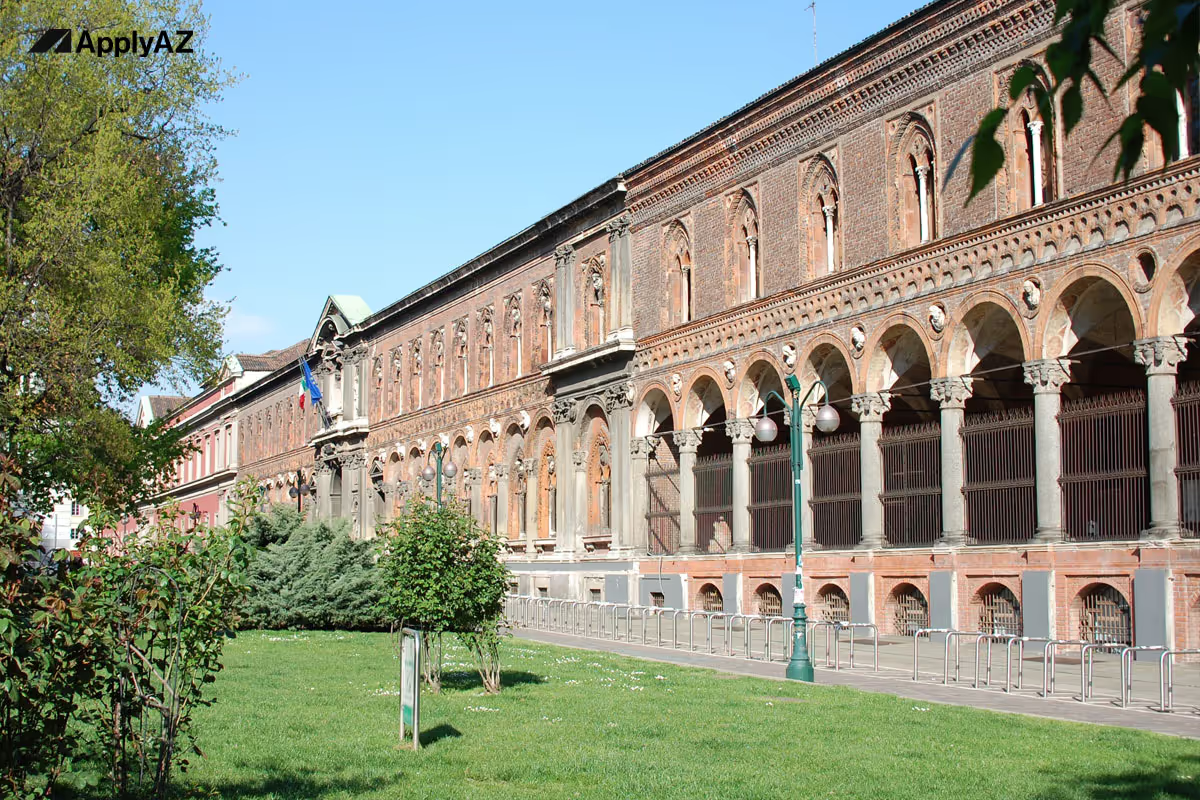Heading
Heading








University of Milan
English‑taught programs in Italy: breadth and quality
Founded in 1924, the University of Milan is a flagship among public Italian universities. It offers more than 15 full degrees entirely in English across life sciences, data science, economics, law, and the humanities. Small‑group seminars, modern laboratories, and research‑led teaching earn the university a consistent place in global top‑200 rankings for medicine, biology, and physics. Academic life blends lectures with project work and Erasmus+ exchanges, giving you both depth and international exposure.
Life in Milan: culture, costs, connections
Milan pairs Renaissance architecture with Europe’s fastest‑growing innovation district. Four metro lines, trams, and regional trains keep average commutes under 35 minutes, while student passes cut transport costs by half. Cafés stay open late for study sessions; world‑class music, design fairs, and football derbies fill weekends. Rents start around €400 per month in shared flats—pricey for Italy, but offset by campus dining at €4 per meal and the chance to share expenses with classmates.
Funding advantages: DSU grant and other support
As a state institution, Milan charges income‑linked tuition that ranges from €156 to roughly €3 000 per year. International students can apply for the DSU grant, which may waive tuition entirely and add a €7 000 living allowance, residence‑hall place, and meal vouchers. Merit scholarships reward top GPAs, and research assistant roles provide paid experience. With these tools, many graduates finish their master’s with little or no debt, mirroring the affordability of tuition‑free universities Italy promotes.
Career gateways in a global city
Milan is home to Italy’s stock exchange and to headquarters of companies such as IBM, Luxottica, and Nestlé. University partnerships cover more than 4 000 firms, feeding internships in finance, biotech, fashion tech, and AI start‑ups. Career Services run résumé labs, mock interviews, and on‑campus job fairs; 87 % of international graduates secure work or PhD places within seven months. Language tandems, alumni mentoring, and professional certification courses (Prince2, CFA Level I, Lean Six Sigma) further boost employability.
Five key takeaways
- Wide portfolio of English degrees backed by strong research.
- Dynamic metropolitan lifestyle with rich art and sport.
- Income‑based fees plus DSU grant make study highly affordable.
- Direct pipelines to internships and high‑growth careers.
- Supportive campus: libraries until midnight, 100+ clubs, free fitness classes.
In two minutes we’ll confirm whether you meet the basic entry rules for tuition‑free, English‑taught degrees in Italy. We’ll then quickly see if we still have space for you this month. If so, you’ll get a personalised offer. Accept it, and our experts hand‑craft a shortlist of majors that fit your grades, goals, and career plans. Upload your documents once; we submit every university and scholarship application, line up multiple admission letters, and guide you through the visa process—backed by our admission‑and‑scholarship guarantee.
MSc Geophysics at University of Milan
1. Why choose Geophysics at a leading public Italian university?
If you want to decode the planet’s hidden signals while gaining a career‑ready profile, the University of Milan offers one of the most forward‑looking English‑taught programs in Italy. The MSc Geophysics builds advanced skills in seismology, exploration geophysics, and environmental monitoring, all delivered entirely in English. You can therefore study in Italy in English without compromising scientific depth or employability. Tuition fees follow the state scale used across public Italian universities, and DSU grants can push costs close to the level of tuition‑free universities Italy. Scholarships for international students in Italy further increase affordability.
Geophysicists are in demand wherever ground stability, resource efficiency, and climate resilience matter. Employers range from renewable‑energy start‑ups and carbon‑storage pioneers to insurance firms and civil‑protection agencies. This degree equips you to solve real‑world problems while meeting global sustainability goals.
2. Programme overview: from planetary physics to practical solutions
2.1 Foundational semester
In the first term you develop a rigorous grounding in:
- Continuum Mechanics for Geoscientists: stress, strain, and wave propagation in rocks and fluids.
- Advanced Seismology: earthquake source physics, focal‑mechanism inversion, and travel‑time tomography.
- Signal Processing and Inverse Methods: MATLAB and Python toolkits for de‑noising, filtering, and imaging subsurface features.
Laboratory sessions make theory tangible. You will programme a synthetic seismogram, invert it to retrieve subsurface velocity models, and compare your output with regional earthquake catalogues maintained by INGV (Italian National Institute of Geophysics and Volcanology).
2.2 Exploration and resource modules
Semester two shifts the focus to applied geophysics:
- Reflection and Refraction Seismics – design of 2D and 3D surveys, migration algorithms, and quantitative interpretation for geothermal, groundwater, and hydrocarbon targets.
- Electrical, Electromagnetic, and Gravity Methods – resistivity tomography, ground‑penetrating radar, magnetotellurics, and gravity modelling, including joint‑inversion strategies.
- Petrophysics and Rock Physics – laboratory determination of acoustic impedance and anisotropy, crucial for reservoir characterisation and CO₂ sequestration.
The curriculum emphasises low‑carbon resource management. Coursework addresses the geophysical challenges of geothermal energy extraction, deep saline aquifers for CO₂ storage, and mineral exploration needed for renewable‑energy materials.
2.3 Environmental and engineering geophysics
As climate risk grows, geophysicists increasingly protect lives and infrastructure. A dedicated block covers:
- Near‑Surface Geophysics for Hazards – landslide detection, liquefaction assessment, and karst mapping.
- Geophysical Monitoring of Critical Structures – seismic site response analysis for hospitals, bridges, and industrial facilities.
- Remote Sensing and UAV Geomatics – LiDAR, InSAR (satellite radar interferometry), and drone‑borne photogrammetry for slope stability and volcanic surveillance.
A week‑long field school in the Italian Alps merges terrestrial laser scanning, electrical resistivity profiles, and passive seismic arrays to evaluate a real slope prone to rockfall. You process the data on‑site and present a mitigation plan to local civil‑protection officers.
2.4 Optional specialisations
From semester three you shape the degree to match your ambitions:
- Energy Geophysics – electives in Reservoir Geomechanics and Geophysical Logging, culminating in a project on acoustic‑emission monitoring in geothermal wells.
- Marine Geoscience – modules such as Marine Seismics and Gas Hydrates, followed by a high‑resolution seismic profile of a continental shelf.
- Planetary Geophysics – courses in Comparative Planetology and Spaceborne Gravity, leading to a thesis that models crustal thickness on Mars.
3. Field equipment, super‑computing, and international mobility
- Instrumentation suite: 48‑channel seismograph, multielectrode resistivity system, gravimeter, magnetometer, and thermal probe arrays.
- High‑performance computing: Access to the Leonardo Tier‑0 supercomputer lets you run full‑waveform inversion across hundreds of cores.
- International exchanges: Erasmus+ agreements with TU Delft, ETH Zürich, and Université Grenoble Alpes let you focus on induced seismicity, glaciology, or rock‑glacier dynamics.
- Summer internships: Paid placements with ENI, SNAM, RINA Consulting, and Alpine Hydrogeology Research Centre provide real‑world exposure to Italian and transnational projects.
4. Thesis pathway and research culture
You dedicate the final year to a research thesis worth 42 ECTS. Recent topics include ambient‑noise tomography of Lombardy’s seismic gap, continuous gravity monitoring for volcanic unrest at Campi Flegrei, distributed acoustic sensing along fibre‑optic cables, and time‑lapse imaging of CO₂ mineralisation in ultramafic rocks. Many students publish in Geophysical Journal International or present at the EGU General Assembly, boosting career prospects and PhD applications.
5. Career trajectories and industry demand
An MSc in Geophysics from Milan unlocks diverse roles:
- Seismic‑risk analyst at insurance or reinsurance firms.
- Exploration geophysicist in geothermal, hydrogen storage, or critical‑minerals sectors.
- Environmental consultant assessing brownfield sites or groundwater contamination.
- Data scientist applying machine‑learning to geophysical time series.
- PhD researcher in solid‑earth physics, planetary science, or engineering seismology.
According to the latest alumni survey, 92 % of graduates secure employment or doctoral funding within 12 months; 45 % work outside Italy, reflecting the programme’s international appeal.
6. Fees, scholarships, and the DSU grant advantage
Annual tuition ranges from €156 to €3 900, directly linked to declared family income—well below most European and US equivalents. International students can apply for:
- DSU grant – covers tuition, accommodation, meals, and provides a cash allowance up to €7 000 per year.
- Excellence scholarships – €6 000 for top‑ranking applicants.
- Part‑time research assistantships – hourly contracts in seismology labs or GIS centres, typically €4 000 per academic year.
When combined, these opportunities reduce net costs to levels similar to what tuition‑free universities Italy achieve.
7. Five advantages that set Milan’s Geophysics MSc apart
- English instruction plus Italian affordability – world‑class teaching in English within a public system with low fees.
- Cutting‑edge technology – from fibre‑optic DAS to supercomputing inversion.
- Sustainability focus – geothermal, CCS, and hazard resilience embedded throughout.
- Strategic location – close to Alpine and Apennine test sites and Italy’s energy corridor.
- Robust funding – DSU grant plus scholarships for international students in Italy make ambitious study realistic.
Ready for this programme?
If you qualify and we still have a spot this month, we’ll reserve your place with ApplyAZ. Our team will tailor a set of best‑fit majors—including this course—and handle every form and deadline for you. One upload, many applications, guaranteed offers, DSU grant support, and visa coaching: that’s the ApplyAZ promise. Start now and secure your spot before this month’s intake fills up.

They Began right where you are










